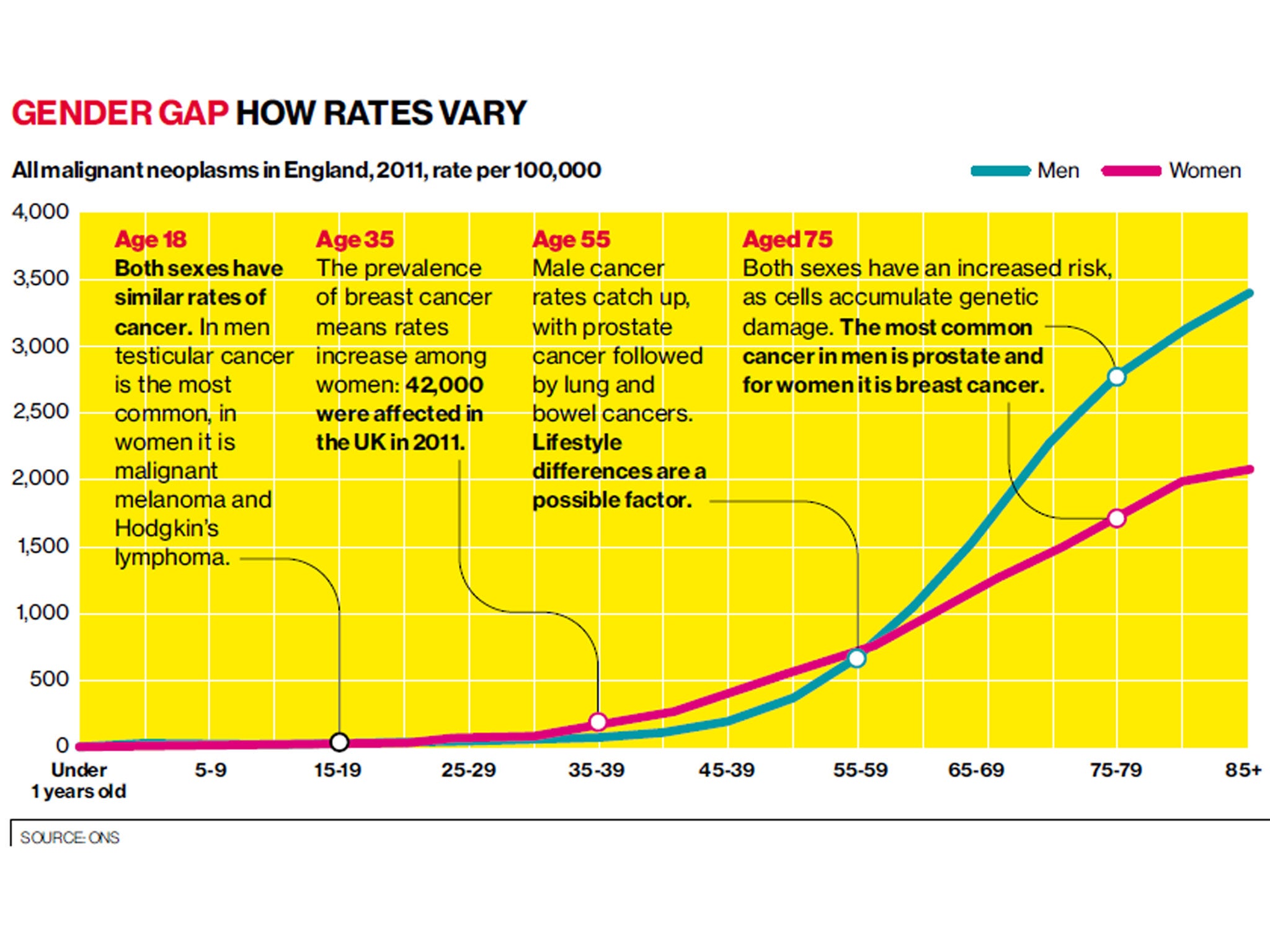Cancer risk for women in their 30s and 40s double that of men
Rates were higher than expected for both sexes in the north of England

Your support helps us to tell the story
From reproductive rights to climate change to Big Tech, The Independent is on the ground when the story is developing. Whether it's investigating the financials of Elon Musk's pro-Trump PAC or producing our latest documentary, 'The A Word', which shines a light on the American women fighting for reproductive rights, we know how important it is to parse out the facts from the messaging.
At such a critical moment in US history, we need reporters on the ground. Your donation allows us to keep sending journalists to speak to both sides of the story.
The Independent is trusted by Americans across the entire political spectrum. And unlike many other quality news outlets, we choose not to lock Americans out of our reporting and analysis with paywalls. We believe quality journalism should be available to everyone, paid for by those who can afford it.
Your support makes all the difference.Women in their late 30s and early 40s are twice as likely to contract cancer as men, according to official figures which also show that people in the North are at increased risk.
The relatively high rate of cancer among 35-44 year-old women is largely down to breast cancer, while the most common male cancers tend to strike later, experts said.
Figures for 2011 released by the Office for National Statistics showed that breast cancer remained the most common cancer among women (30.7 per cent of new cases, affecting 42,000), ahead of lung (11.6 per cent) and colorectal (11.2 per cent).
But the figures showed that elderly men have much higher cancer rates than elderly women.
Men aged 65-69 have a 37 per cent higher chance of contracting the disease than women of the same age, with that figure raising to 63 per cent among over-85s.
Nick Ormiston-Smith, statistical information manager at Cancer Research UK, said: “Even though you’re more likely to get breast cancer when you’re older there are some younger women who contract it. Overall, however, men are more likely to get cancer than women across all ages. You’re about 14 per cent more likely to develop cancer at some point if you’re a man.”
Some 139,120 men in the UK were registered as having cancer in 2011 compared with 135,113 women, with both figures likely to rise by the time additional hospital admissions are included in the statistics. The most common cancers for men remained prostate (25.6 per cent), lung (13.8 per cent) and colorectal (13.6 per cent).
Cancer rates were higher than expected for both sexes in the north of England and also for women in the East Midlands and South West regions, a trend Mr Ormiston-Smith suggested might be related to deprivation.
He said: “There is evidence that people from lower socio-economic groups are more likely to develop cancer”.
Responding to figures published by the ONS, Ciarán Devane, chief executive at Macmillan Cancer Support, said: “It is startling that the number of new cases of cancer diagnosed has soared by nearly a fifth in the last ten years.
“However, it is important to note that this overall figure disguises a wide variation across the cancer types.
“While it is welcome news that the number of new cases of ovarian and stomach cancer rates have decreased, malignant melanoma is up by a huge 66 per cent.
“[Today’s ONS] figures also reveal a worrying gender gap. Cancer affects women more in younger age groups, but men are significantly worse affected over the age of 60. The reasons for this are complex and only partially understood.
“Further research needs to be carried out to understand these differences better.”
He added: “We are warning that the rising numbers of cancer patients poses a huge challenge for the NHS as it will not be able to cope with the surge in demand unless it puts the necessary plans and resources in place now.”
Join our commenting forum
Join thought-provoking conversations, follow other Independent readers and see their replies
Comments